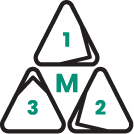For those unfamiliar with sales, it might appear as an arena for lone wolves - professionals who single-handedly close deals and thrive on individual glory. This is a common perception, but it is a fallacy. In reality, especially in the age of modern sales methodologies like MEDDPICC, the most transformational and defining deals require a constant and continuous collective effort.
Collective Deal Ownership: A Closer Look
If you are in sales, you might be familiar with the feeling that the onus of making an opportunity successful is on you. In reality, when we think about the full customer experience across the lifecycle:
- Awareness/Prospecting
- Selling/Closing
- Value Delivery + Up-selling and Renewals)
It is a cross-functional game. The more we take an open and positive mindset toward that reality, the more value we can get out of it as a collective, especially when underpinned by a common language.
Benefits of Collective Ownership:
-
Diverse Insights: By involving a variety of team members, deals benefit from multiple perspectives, enhancing the quality of proposals and solutions.
-
Shared Accountability: When a team shares ownership, they also share responsibility. This can lead to increased diligence, as no one wants to let their teammates down.
-
Unified Goal: The team becomes focused on a common objective, fostering a sense of camaraderie and unity.
How Collective Deal Ownership Elevates MEDDPICC Implementation
The MEDDPICC framework, with its emphasis on Metrics, Economic Buyers, Decision Criteria, Decision Process, Implicate Pain, Champion, and Competition, inherently promotes collaboration. Leadership plays a crucial role in doubling down on the right cadences and creating the cultural environment for MEDDPICC to thrive.
Diverse Insights for Decision Criteria: Different team members bring unique viewpoints, helping to understand and cater to complex decision criteria of clients better.
Harnessing Collective Strengths: With a team's collective knowledge, identifying pain points and potential champions becomes a more streamlined process.
Unified Goal for Better Execution: The entire sales process, from understanding metrics to anticipating competition, becomes cohesive when the team operates with a collective vision.
Pim Roelofsen, MEDDICC’s CRO, notes, "In MEDDPICC, the strength isn’t just in its components but in its collaborative spirit. When teams own deals collectively, every phase of the sales process, from identifying pain to navigating competition, becomes richer, more informed, and incredibly dynamic, encompassing the entire customer lifecycle."
Team-Building Strategies for Collective Ownership
Drawing parallels with successful teams, like the New England Patriots and their 'Do Your Job' culture, provides insights into how sales teams can foster collective deal ownership.
-
Define Roles Clearly: Much like the 'Do Your Job' mantra, every team member should know their specific role. Clarity ensures that everyone can focus on their strengths, leading to a more efficient process.
-
Encourage Cross-Functional Interactions: Foster environments where salespeople can regularly interact with product teams, marketers, and other departments. This facilitates a deeper understanding of products, USPs, and market positioning.
-
Celebrate Team Wins: Instead of just highlighting individual achievements, celebrate team successes. This not only boosts morale but also emphasizes the importance of collective effort.
-
Feedback Loops: Just as the Patriots analyze their games to refine strategies, sales teams should have regular feedback sessions. This helps in identifying areas of improvement and ensuring that the entire team is aligned.
-
Continuous Learning as a Team: Organize workshops and training sessions where team members learn together, fostering a sense of unity and shared growth. Encourage team members to bring in their craft while staying open-minded. For example, an SDR might come up with a great idea based on their experience in the prospecting phase, generating an idea for influencing Decision Criteria in selling.
As sales methodologies evolve, there’s a clear shift towards collaboration and collective ownership. This isn’t just about being inclusive; it’s about harnessing the collective strength, diversity, and dynamism of a team to navigate the complexities of modern sales landscapes.
In the end, the shift towards collective deal ownership isn’t just a strategy; it’s a culture. It's about understanding that while individual brilliance might win games, collective brilliance wins championships. And in the world of sales, with frameworks, methodologies, processes, and playbooks like MEDDPICC, this couldn’t be more true. It's ultimately a mindset, there for you to embrace when you work towards it.
For more insights into MEDDPICC and building a winning sales culture, stay tuned to our series and delve deeper into our resources.





.png)





.png)
























%201.png)








.png)
-1.png)

.png)

.png)